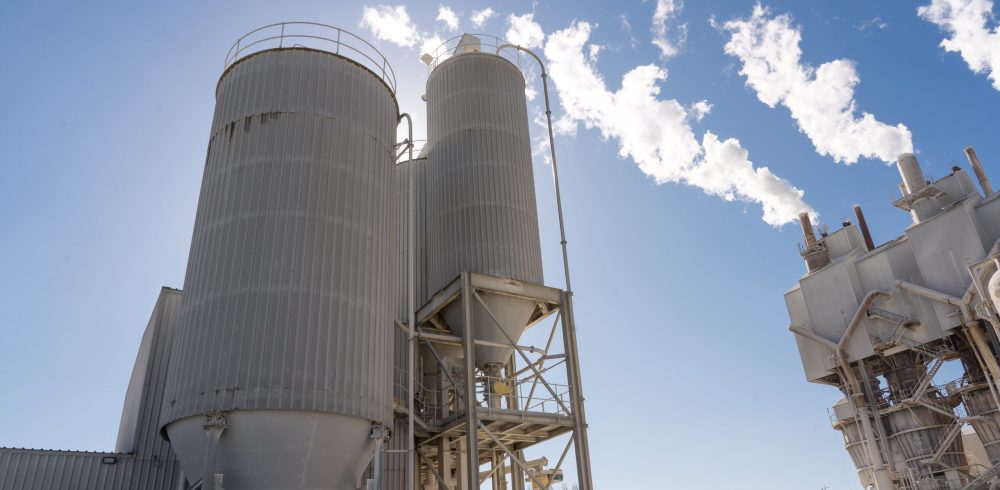White Paper – New Monitoring System is Cutting Carbon and Costs for Manufacturers : Manufacturers are facing one of the most challenging periods in memory as costs soar, logistics bills continue to rocket and pressure grows to cut carbon emissions.
Innovation has always been at the heart of manufacturing, but a North Lincolnshire firm has found a new way to drive new efficiencies in one of the more unlikely sources through the manufacturing process, it’s storage silos.
Minsterport is a silo specialist that helps organisations across the country to manage, monitor, maintain and clean silos. It has developed a new cost-effective remote monitoring system called MySilo that allows manufacturers to access live data about how much product is in a silo and if the product is flowing at the correct rate.
This information can be invaluable as, not only does it prevent staff from manually checking levels – helping to improve safety – it also ensures businesses never run out and risk halting production. Crucially, however, it allows business owners to order new product at the optimum moment, ensuring they can cut down on part deliveries. This reduces the amount of lorry traffic to your premises, slashes fuel costs and cuts carbon.
Driving efficiencies through inventory management
One business that is already seeing savings from the MySilo remote monitoring system is Singleton Birch, a 200-year-old manufacturer of lime products.
CEO Richard Stansfield sees decarbonising quarrying and lime production as a huge opportunity but is also realising efficiencies and carbon savings within the rest of the business.
One area that has made a huge difference, both in terms of carbon emissions and bottom line, is a focus on inventory management.
Singleton Birch uses Minsterport’s MySilo remote monitoring for all silos involved in the lime process and the wider business, which has not just helped revolutionise how the business operates itself, but has had marked, positive outcomes for how key clients manage their own silo levels.

The power of telemetry
In addition to safely recording data, the real value in MySilo is its ability to deliver efficiencies via better forecasting, optimising logistics and almost eradicating the risk of silos running dry.
Richard Stansfield said the efficiencies the platform brought to his business were evident early on and produced significant cost savings. He says: “We have connected the remote monitoring system to 20 of our onsite silos. It was a simple and inexpensive thing to do, but it has brought tremendous clarity to the business.
“We quickly learned what remote monitoring could do for us,” Mr Stansfield said. “But we knew that if we could convince our customers to use it, the risk of them running out of product would be a thing of the past, simply because they – and us – can see exactly what is in their silos at any time.”
Peter Widdowson, Minsterport Business Manager, said the telemetry system also enabled Singleton Birch to plan silo service and maintenance routines more effectively by identifying lime build up and checking the flow of product never changes.
Cutting fuel costs and carbon
Arguably the biggest benefit of the telemetry system, is its ability to cut down on logistics, saving money and cutting carbon.
For example, with Singleton Birch encouraging customers to also adopt the telemetry system, it allows them assess customer’s needs remotely, and optimise the delivery schedule around that.
Doing this has led to a significant reduction in the number of partially full tankers sent out and has dramatically cut down on wasted journeys.
Peter says: “What often happens is a customer might have the capacity to take 28 tons of your product, but on a Friday, they’re running low and want to ensure they have enough to last until Monday.
“So, instead of ordering a full delivery, they’ll order 24 tons. This is inefficient and if this is the way they regularly order, essentially using best guess, they will order many partial loads across the year.
“With the telemetry system in place, they can monitor all their silo levels directly and work out if they have enough lime to last until Monday. If they do, they can get a full delivery then.
“Working like this means they never run out of product, and we reduce the annual number of tanker journeys, which can be as much as 25 per cent.”
As fuel accounts for 30 – 40 per cent of the running costs of an HGV and HGV movements account for around five per cent of the total greenhouse gas emissions emitted each year in the UK, Mr Widdowson said large efficiencies can be gained.
“Often, a wasted journey will incur a 200-mile round trip, so you can see the impact this is having on the business’s costs and the environment,” Mr Widdowson said. “Without telemetry and email alarm alerts to the relevant people in place, these journeys happen several times a week.”

Data-driven insights for manufacturers
Richard Stansfield concludes that adopting telemetry across the business had provided a range of data-driven insights that they hadn’t had access too before. This had developed into a range of efficient new processes and has also transformed their customer service offer.
“When we set out on the journey of introducing telemetry, we had an idea of the benefits we wanted it to bring us,” he said.
“But it has ended up delivering so much more than that, from manufacturing through to ensuring our customers never run out of product, it has added value at every step of the way while at the same time helping us to cut costs and our carbon footprint. It is definitely a win-win for us.”
____
To find out more about the advantages of telemetry, contact Peter Widdowson or William Taylor Spencer on 01652 686010 (Peter 07787 127558 / William 07774 967125), email peter@minsterport.com or will@minsterport.com, or you can visit www.minsterport.com.
Manufacturing & Engineering Magazine | The Home of Manufacturing Industry News















